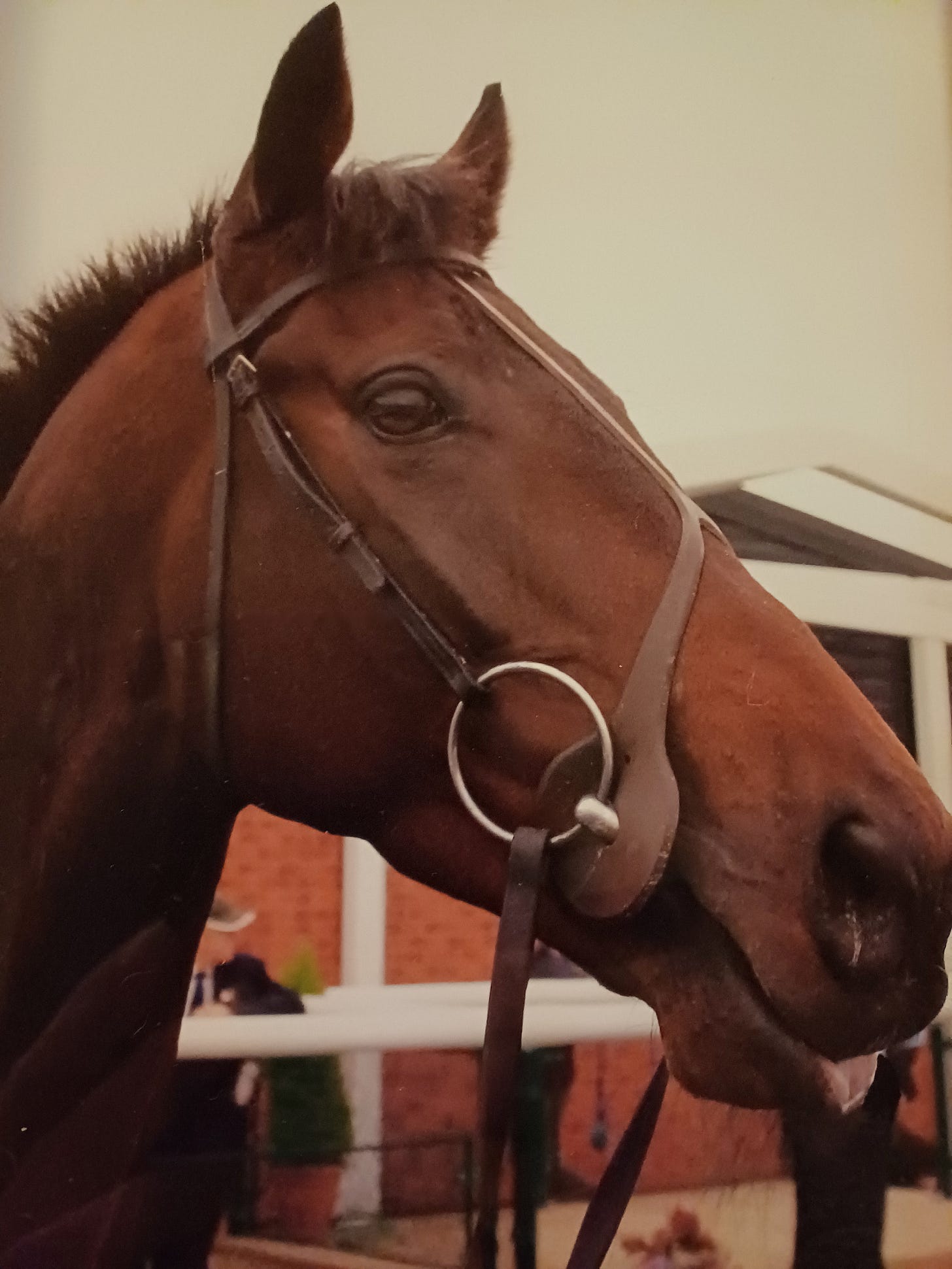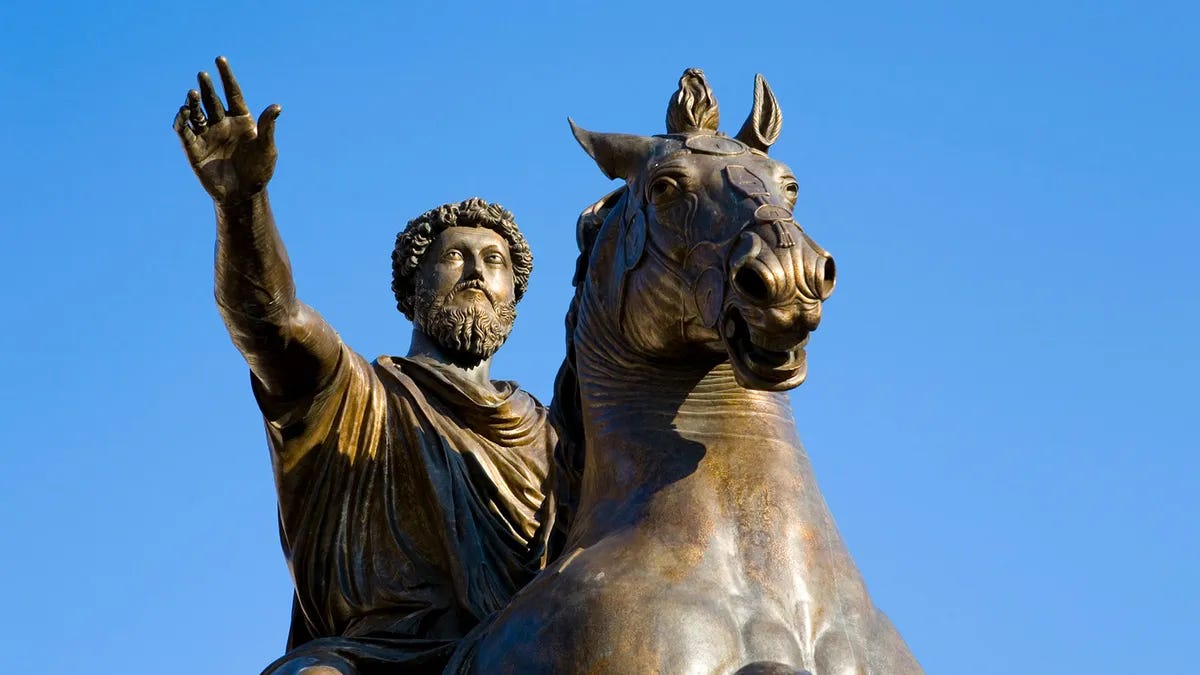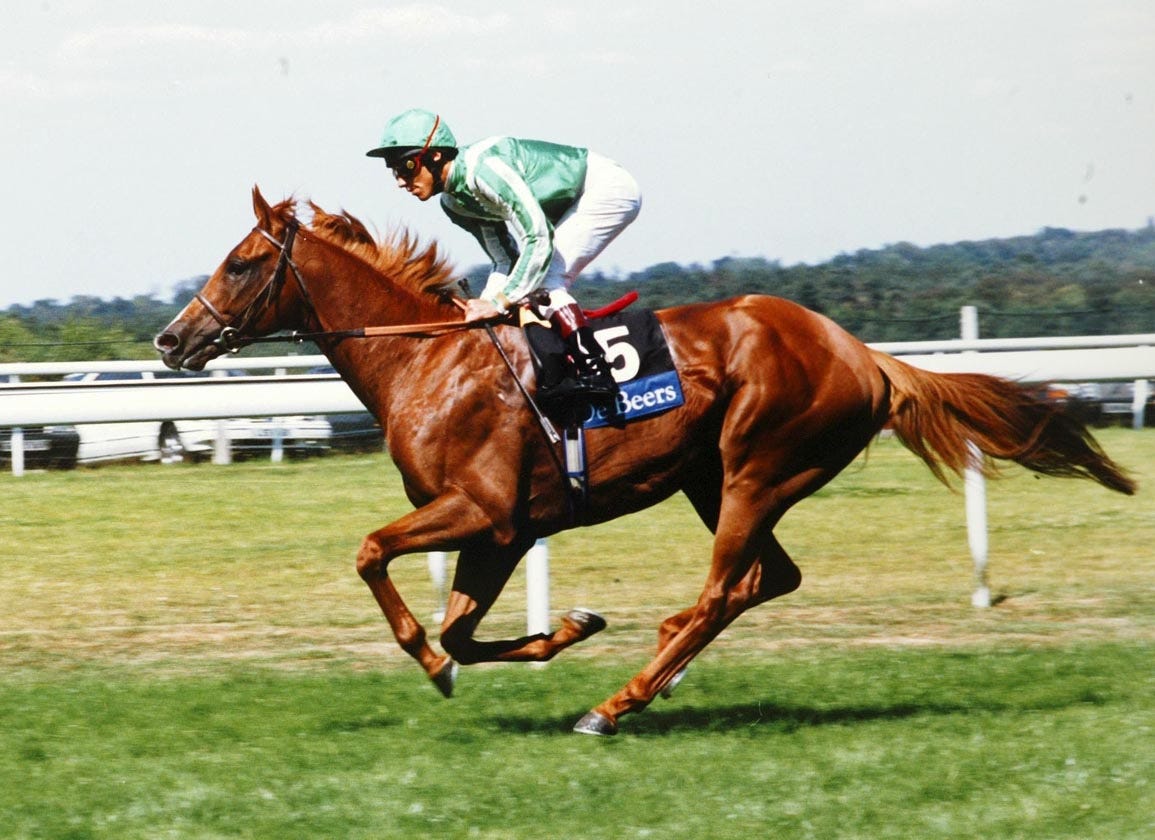When my father died, he left us a young racehorse. After The Show, bay colt, winner of seven races over five and six furlongs. Now a happily venerable resident at a friend’s stud just outside Newmarket. There he is, above, and here we are together this summer. He is hard to snap because he moves all the time, but look how much I adore him, and how he sort of quite likes me.
This is the story of my love affair with the thoroughbred, which did not begin with After The Show, although he has embodied its miraculous continuation. In fact it began almost thirty years ago, as I shall explain.
(Before I do, I should state that I have a violent loathing for jumps racing, the Grand National, and anybody who reneges on the deal that a horse is for life and not just for racing: such people are beneath contempt.)
So here we go.
It began, in a way, in front of the statue of Marcus Aurelius, which stands at the Capitol in Rome. It is the horse that compels me, not the man. I remember an evening in late summer, the lights of the city behind me as I stared up into the horse’s glancing eye. I thought: I could stay here for the rest of my life and this sight would still not satisfy me.
A little while afterwards, I was standing again in front of Marcus Aurelius’s horse, and his head was looking down on me with its mysterious eye. But this time the eye had a dark-blue gleam, and the head was a warm rich chestnut. This was a real animal, a stallion, a Derby-winning champion called Lammtarra; I had written a little book about him (a love letter, in fact) and the effect that he had had upon me. Now I was visiting him at an A-list stud farm in Newmarket, and here, again, were the unfathomable emotions aroused by the statue in the Capitol.
Why? He was not a thing of bronze, nor a Stubbs. I should have been able to respond to him simply as a horse, the sweet and splendid greedy-guts who was snaffling Polo mints out of my hand. Except that I could not, quite. For to me he was art, art brought to life.
The thoroughbred racehorse is a man-made creation. It was conceived in the early eighteenth century as an ideal of beauty, speed and strength, and the racing season, with its totemic contests - its Derbies and Oaks and Guineas and Arcs - was developed as a means of testing the worth of this creation.
So Lammtarra had a dual and baffling aspect. He carried with his horse reality a mythical dimension. He inhabited the world that we had made for him and, like all the best works of art, he had a mystery that eluded his creator.
‘Your mystery, your mystery’ is what Othello says to Desdemona and there is, indeed, a great deal of the love affair between thoroughbreds and those who engage with them. Lammtarra, who died in 2014, and whom I later had the privilege of visiting regularly, was - in a sense both non-literal yet very real - the love of my life. I still miss him. In 1995, when I was young and impressionable and watched him win not just the Epsom Derby but the King George at Ascot and the Arc at Longchamp in Paris - he raced and won just four times, paring a sporting career down to a ‘got what you want?’ simplicity - the horse’s golden season was entangled with my own in a sudden unexpected romance; he crystallized in me all the feelings of passion and beauty and otherness that ideally go with love. And there was, too, this artistic dimension… the fact that I was watching a breathless here-and-now whose aesthetic perfection had been designed, dreamed.
I am far from alone in responding this way to a thoroughbred horse. Think of the late Queen; not even Prince Philip could cause a light in her face as bright as when her mare, Estimate, won the Ascot Gold Cup in 2013.
Keep reading with a 7-day free trial
Subscribe to Laura Thompson’s Substack to keep reading this post and get 7 days of free access to the full post archives.







